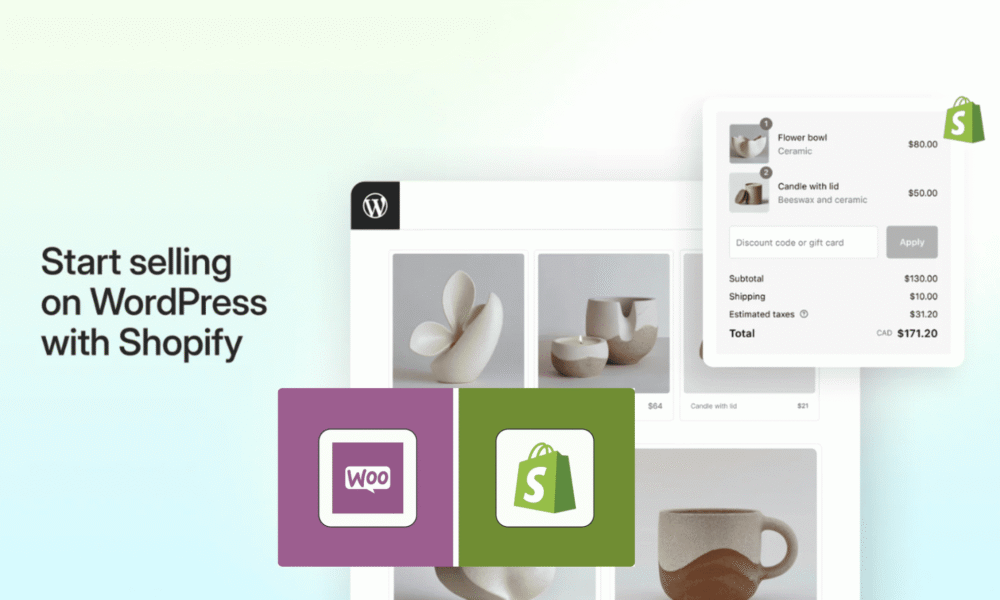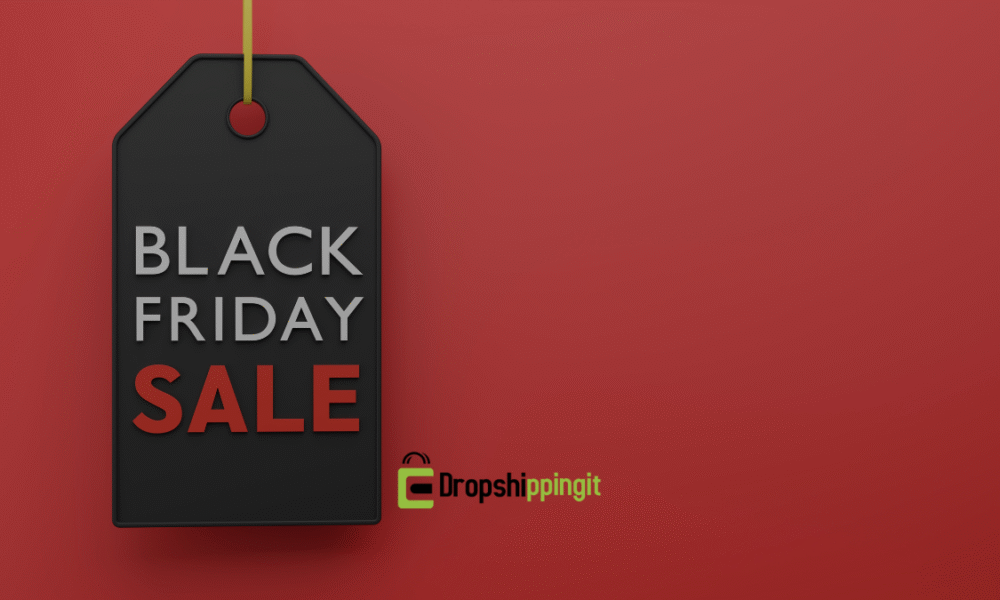If you love WordPress CMS but you want the power of Shopify's…
How To Use Shopify App Store Marketplace (A Free Guide )

Have you ever asked yourself how to use the Shopify app store to install an app to your Shopify store? Well, read on.
You may have heard of Shopify, the most popular Cloud E-Commerce platform. But were you aware of the Shopify App Store? Every business has unique requirements that change over time. That’s why Shopify App Developers make adaptable solutions like the Shopify App Store, allowing you to grow your business the way you want.
Shopify Apps have impacted merchants so much that 85% say they rely on them to run their businesses.
Thousands of Shopify Apps are created to assist merchants in starting businesses, selling more, growing, and saving time. Finding the best-specialized App for your business may be difficult with many options.
This is where the Shopify App Store comes in to save the day!
Finding Apps that meet your requirements is now easier than ever. For example, the Shopify App Store contains thousands of apps from which vendors can choose.
These Shopify Apps function similarly to plug-ins, making a business more useful and providing a better customer experience. For example, consider the Shopify App Store your personal Shopify Apps consultant.
As more merchants use Apps to grow their businesses, the Shopify App Store becomes more sophisticated.
This article will teach you everything you need to know about the Shopify App Store and its most popular features. You will also add about the various types of Apps that can be added to the Shopify App Store and how to set up Apps in the Store.
At the end of this article, you’ll learn about the best Shopify apps you can use for free. So, put on your reading glasses and dissect the Shopify App Store.
Let Your Store Stand out. Sell more. Scale fast and Easily.
You can customize your Shopify store with your choice of apps from over 7,000 apps available on the Shopify app store. Different online businesses need different Shopify apps.

Getting Started With The Shopify App Store
Shopify is a cloud-based platform that incorporates an online store and a shopping cart, enabling businesses to establish an online store quickly and easily.
Because over 1,75 million businesses use the platform in over 100 countries, Shopify has become a household name for all-in-one E-Commerce solutions.
Many E-Commerce businesses use Shopify because it has low operating costs and is easy to use.
Shopify Merchants can find the best Apps to help them grow their businesses in the Shopify App Store, which features relevant categories and personalized recommendations.

Shopify is ideal for merchants who look to sell their products through multiple Sales Channels, like the web, mobile, social media, marketplaces, physical stores, & pop-up stores.
You can monitor all Sales Channels through the Shopify Admin Dashboard, including creating and managing an Online Store, accepting payments, managing inventory, tracking orders, and responding to them.
Features of the Shopify App Store
The Shopify App Store is a straightforward, easy-to-install platform with many incredible features and services for its market dominance.
Here are some of the most critical aspects of the Shopify App Store:
- Storefront
- Store Management
- Shopping Cart
- Products
- Marketing and SEO
- Analytics
- 24 Hour Support
Storefront
The Shopify App Store already has many templates made by well-known designers such as Happy Cog, Pixel Union, and many others. You can easily change your storefront dashboard using these templates for your Store’s HTML and CSS.
You can also choose your domain name or purchase one from Shopify to host your website. It also lets you post articles to your Shopify blog and manage comments.
Store Management
The Shopify App Store lets you keep track of your customers and get to know them better by providing information about their shopping habits and orders.
You can also sort and export your lists based on location, previous purchases, etc. Shopify integrates with numerous apps, eCommerce platforms, CRMs, and other things to help you increase sales. You can also use your smartphone to manage and update your Store, orders, and customers.
Shopping Cart
Each Shopify App Store includes a free 256-bit Secure Socket Layer (SSL) certificate to protect your transactions, credit card information, and content. In addition, the Shopify App Store has an “Abandoned Checkout Recovery” feature that lets you email potential customers who abandoned their shopping carts, which can help you make up for lost sales.
It integrates with over 100 payment gateways worldwide, including Bitcoin, PayPal, and others. It not only supports over 50 languages, but it also handles country and state tax rates automatically.
Products
You can use CSV files to manage your inventory, track stock counts, and import and export products. Furthermore, you can manage and optimize your product pages for search engines by using meta tags and URL handles and organizing products by category, sale, season, and more.
Shopify allows you to sell products without restrictions, and your customers can easily order and download digital products.
Marketing and SEO
Shopify employs Search Engine Optimization techniques to make that your content is optimized. For example, you can spread the word about your products and campaigns by linking your websites to social media sites such as Facebook, Instagram, and others.
You can also increase sales and customer loyalty by creating targeted discount codes and allowing customers to use gift cards as store credit.
You can use CSV files to manage your inventory, keep track of how many items you have in stock, and import or export your products.
You can also manage and optimize your product pages for search engines using meta tags and URL handles. You can also organize your products by category, sale, season, and other factors.
Shopify lets you sell as many products as possible, and your customers can easily order and download digital products.
Analytics
The Shopify App Store includes a dashboard and reports to help you make better decisions and track your business’s growth. You can also export your reports to examine them more closely. In addition, Google Analytics can even track your sales, visits, and referrals.
24 Hour Support
Shopify offers email, chat, and phone support 24 hours a day, seven days a week. You can read FAQs, watch webinars, read ebooks, and participate in community discussion forums.
You can also collaborate with Shopify-approved E-Commerce developers, designers, and others to optimize your Shopify App Store.
Discovering the Different App Types in the Shopify App Store
Did you know that you can add four types of Apps to your Shopify App Store? These apps will assist you in adding new features and improving your Shopify.

Here are the four types of Apps you can add to your Shopify App Store:
| Types | App Description |
|---|---|
| Public Apps | The Shopify App Store contains two types of Public Apps: Listed and Unlisted. The Shopify App Store is where you can set your Listed Apps. Unlisted Apps, on the other hand, do not appear in Shopify App Store search results, but you can install them directly from the App’s App Store. However, both the Public Apps must go through the Shopify App review process. |
| Private Apps | Private Apps are only for your Store and can be created in the Shopify Admin. You can hire an outside App Developer to create a Private App for you, but you must grant them API access. |
| Custom Apps | Custom apps are not available in the Shopify App Store, which allows you to add features and expand your online Store. However, you can request that your App Developer create a custom app for you, which you can then install using the link provided by the App’s Developer. |
| Draft Apps | Shopify Partners can use draft apps while they are being made, but they can only be tested on development stores. For example, when you install a draft app on a store for developers, store transfer is permanently disabled.You can’t put draft apps on your Store until Shopify approves them or you change them to custom apps. |
Installing Apps from the Shopify App Store
This section will teach you how to use the Shopify App Store to install and change your Apps. So, follow the steps below to set up your Apps.
Step 1: Install The App
Step 2: Open your App in the Shopify App Store, View, and Edit it.
View The Details of Your App
- Edit The App’s Settings/Preferences
- View App Invoice
- Look at the App’s permissions and privacy policy.
Step 3: Edit The App’s Proxy URL
Step 1: Install The App
You can install your App to the Shopify App Store by doing one of the three things listed below:
- Use the Shopify App Store to install.
- Install with a link from a third party.
- Install a custom app using a unique install link.
This article will discover how to install the App through the Shopify App Store. Just follow the steps below:
- Sign in to your Shopify App Store here.
- Next, find and select the App you want to install, open a new page, and click on Add App.
- Now, click “Install App” to set it up.
You can use the Shopify Help Center to find out how to install your Apps using third-party install links or Custom Apps.
Step 2: Open your App in the Shopify App Store, View, and Edit it.
After the installation, check to see if the App was installed correctly. So, go to your Shopify App Store’s Admin and click on Apps, as shown below.
Now, choose the App you’d like to open. For example, let’s find out what other options and features of your App you can access through the Shopify App Store.
View The Details of Your App
The “About” page of your App can help you show reviews, problems, and other details about your App. To do this, go to your Shopify Admin and click on Apps. Next to the name of the App, click on About.
Edit The App’s Settings/Preferences
Go to Apps in your Shopify Admin to change your App Preferences, click About, then click Edit Preferences.
View App Billing/Invoice
You can find out how much the App costs to use by going to your Shopify Admin and, clicking on Apps, then clicking on About. Next, click View Current Invoice in the Billing and Usage Charges section.
View the App’s Permissions & Privacy Policy
Follow the steps below to see your App’s permissions and privacy policies:
- In your Shopify Admin, go to Apps, then About.
- Then, click “App Permissions” to see “App Permissions.”
- To read the App’s Privacy Policy, go to the “Data Privacy” section and select “View this App’s Privacy Policy.”
Step 3: Edit The App’s Proxy URL
Some apps use a Proxy URL to retrieve and show dynamic content on a page of your online Store. The default Proxy URL is set by the App Developer, but it can be changed in the Shopify Admin.
Follow these steps to change your App’s Proxy URL:
- Go to Apps in your Shopify Admin and click on About.
- Select Customize URL in the App Proxy section.
- Enter the new Proxy URL you want for the App and click “Save” when you’re done.
Hurray!! You finally know how to add your App to the Shopify App Store and make changes.
Let Your Store Stand out. Sell more. Scale fast and Easily.
You can customize your Shopify store with your choice of apps from over 7,000 apps available on the Shopify app store. Different online businesses need different Shopify apps.

The Best Apps Developed by Shopify
Most Apps made by Shopify are free and come with support from Shopify. However, for apps created by a third-party developer, the Developer may charge a fee and will support the App.
So let’s look at some of the Shopify Apps that can help you manage your Shopify App Store and Apps well.
Shopify Local Delivery: You can use Shopify Local Delivery to make local order delivery more efficient by creating Order Lists, mapping Delivery Locations, and optimizing Routes.

Shopcodes: With Shopify’s Shopcodes App, you can make QR Codes that work as physical “buy” buttons for your business or use them online to lead customers to a product or checkout page.

The QR codes you make with the Shopcodes App don’t affect your Online Store, your customers, or the orders they make.
Script Editor: Shopify Scripts are small pieces of code that let you give your customers a unique Shopping Cart and Checkout experience. You can write and run Ruby scripts to change the prices and features of the items in your Store’s cart. This Script Editor App is only available to Shopify Plus Merchants.

You can choose a range of prices for orders that customers can pay for with cash when they get them. Before shipping and taxes, this range of prices is the amount that can be calculated.
Check out apps by Shopify to explore what other apps they have created.
Read Also:
- How To Use Shopify Profit Margin Calculator In Your Store
- How To Use Free Shopify Discount Calculator In Your Store
- How To Use Free Shopify CPM Calculator For Ad Campaigns 2022
- What Is The Best Website Builder For Creating Store In 2022?
Final Thoughts
I bet you have learned more about the Shopify App Store in this article. You learned about the Shopify App Store’s key features. You also know how to use the Shopify App Store to install an app in Shopify.
You also understood that there are four different kinds of Apps that you can add to the Shopify App Store. Not only that, but you also found Shopify’s 5 best apps.
Let Your Store Stand out. Sell more. Scale fast and Easily.
You can customize your Shopify store with your choice of apps from over 7,000 apps available on the Shopify app store. Different online businesses need different Shopify apps.

So, by the end of this article, you may have finally understood how to use the Shopify App Store to boost your Sales.
Also, getting complex data from different sources like Shopify and other marketing tools can be tricky and time-consuming.
This is where a service called “No-Code Data Pipeline” comes in. It makes it easier to move data from Data Sources, including free sources like Shopify, into your Data Warehouse to view in a BI tool.
Service providers are fully automated, so you don’t need to know how to code to use them.
Start Shopify For Only

Try Shopify free for 3 days, no credit card is required. By entering your email, you agree to receive marketing emails from Shopify.




[…] of Shopify app store—Some third-party app providers in the Shopify marketplace may charge a small fee to add other […]
[…] The Shopify App Stores eliminated the need for sellers to hire developers to integrate more features into their […]